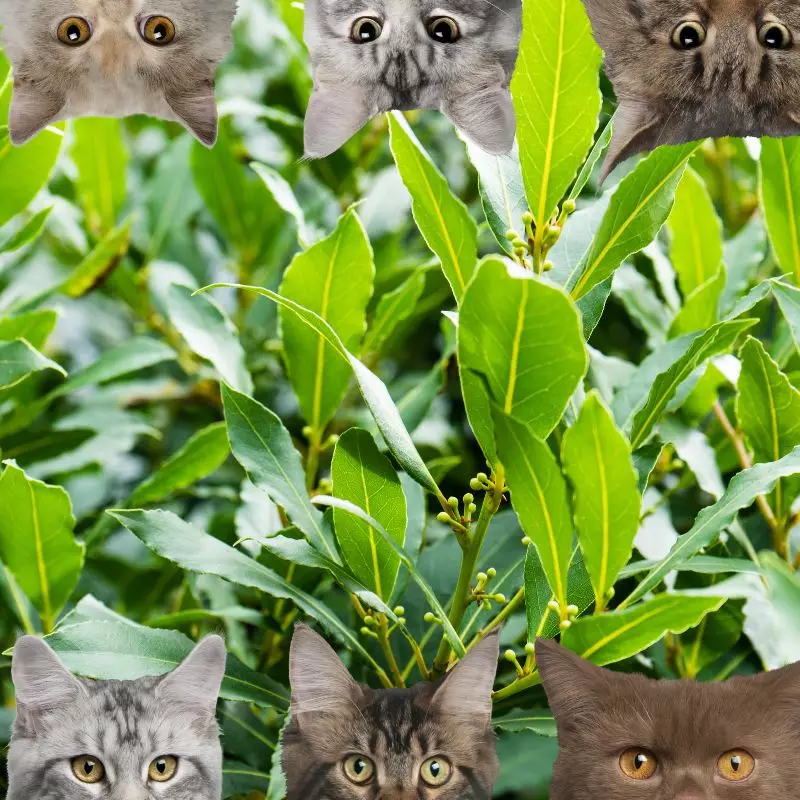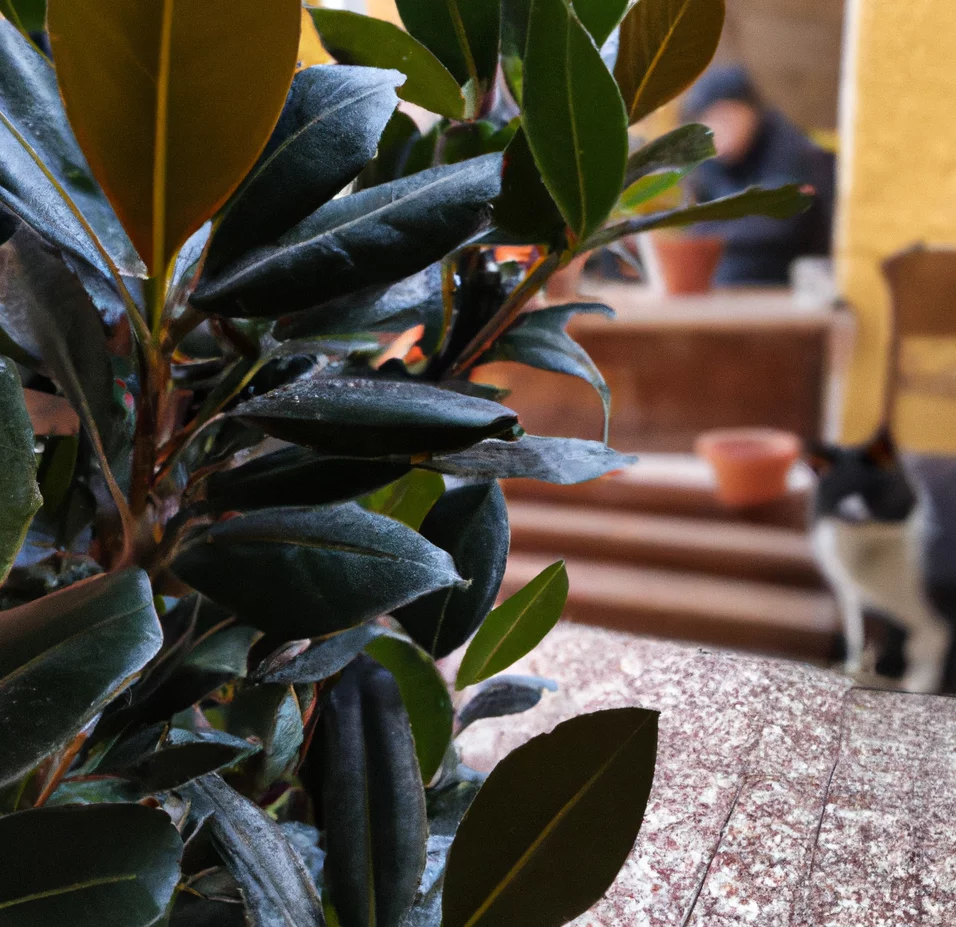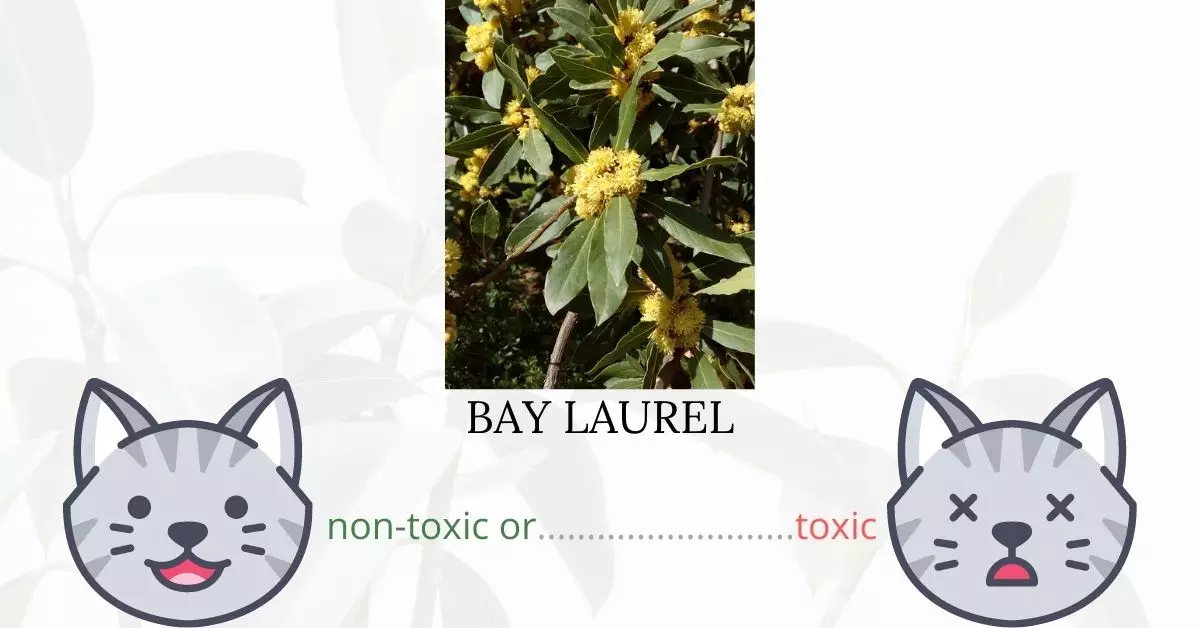Bay laurel, also known as Sweet Bay, Bay Tree, Tree Laurel, Laurel Tree, and Laurel, is indeed toxic to cats. This plant contains eugenol and other essential oils that can damage tissues and release oxidizing agents into a cat’s bloodstream, posing a risk to their organ functions, especially the liver.
This article is written in collaboration with a team of experienced DVMs (doctors of veterinary medicine). Their invaluable insights ensure that we offer accurate and up-to-date information on the potential risks associated with various plants, in this case, Bay Laurel. To further validate our findings, we have also consulted high-authority websites such as ASPCA and PetMD.
Clinical Signs of Bay Laurel Poisoning in Cats

Bay laurel contains eugenol and other essential oils which, when ingested by cats, can lead to a range of adverse clinical symptoms. The root of these symptoms lies in the way these compounds interact with a cat’s physiological systems. Here’s a breakdown of the symptoms and their causation:
- Vomiting: Eugenol irritates the lining of the stomach and intestines. When a cat ingests bay laurel, this irritation can prompt the cat to vomit as the body tries to expel the toxic substance.
- Diarrhea: Similarly, the irritation caused by eugenol in the intestines can lead to increased bowel movements, resulting in diarrhea.
- Digestive Obstruction: Ingesting large portions of the plant or leaves can physically block parts of the digestive tract. This isn’t directly due to the eugenol but is a result of consuming large, undigested plant material.
- Damage to the Digestive Tract: Beyond just irritation, the essential oils in bay laurel can cause inflammation and ulcers in the digestive tract, further exacerbating the discomfort and distress in the cat.
- Damage to the Liver: Eugenol is metabolized in the liver. As it passes through, it can damage liver cells and produce oxidizing agents. Over time, this can hinder the liver’s function, leading to liver cell death or malfunction.
If a cat shows any of these symptoms after coming into contact with or ingesting bay laurel, it is crucial to seek veterinary care immediately.
First Aid and Treatment of Bay Laurel Poisoning in Cats

In the majority of cases of bay laurel poisoning in cats, intravenous fluid treatment is usually all that is required. This still depends though on your cat’s condition. Medication for vomiting and stomach upset may be also given to your cat. The vet may choose to insert a feeding tube down the esophagus or directly into the stomach in cats with liver failure. This allows the cat to drink little amounts of liquid food while avoiding serious illness. Your cat will recover in a few weeks to a month if there are no other difficulties and he or she has received prompt veterinarian care.
Recovery from Bay Laurel Poisoning in Cats

In the majority of cases of bay laurel poisoning in cats, intravenous fluid treatment is usually all that is required. The vet may choose to insert a feeding tube down the esophagus or directly into the stomach in cats with liver failure. This allows the cat to drink little amounts of liquid food while avoiding serious illness. Your cat will recover in a few weeks to a month if there are no other difficulties and he or she has received prompt veterinarian care.
Prevention of Bay Laurel Poisoning in Cats
Avoid areas that are known to grow bay laurel trees. If you use bay laurel leaves in your cooking, make sure that you keep them in a place that your cat cannot access or you can just stop using them. As much as possible, keep your cats occupied indoors to prevent them from straying far from your house.
If you love plants but have cats at home, check out these lists:





